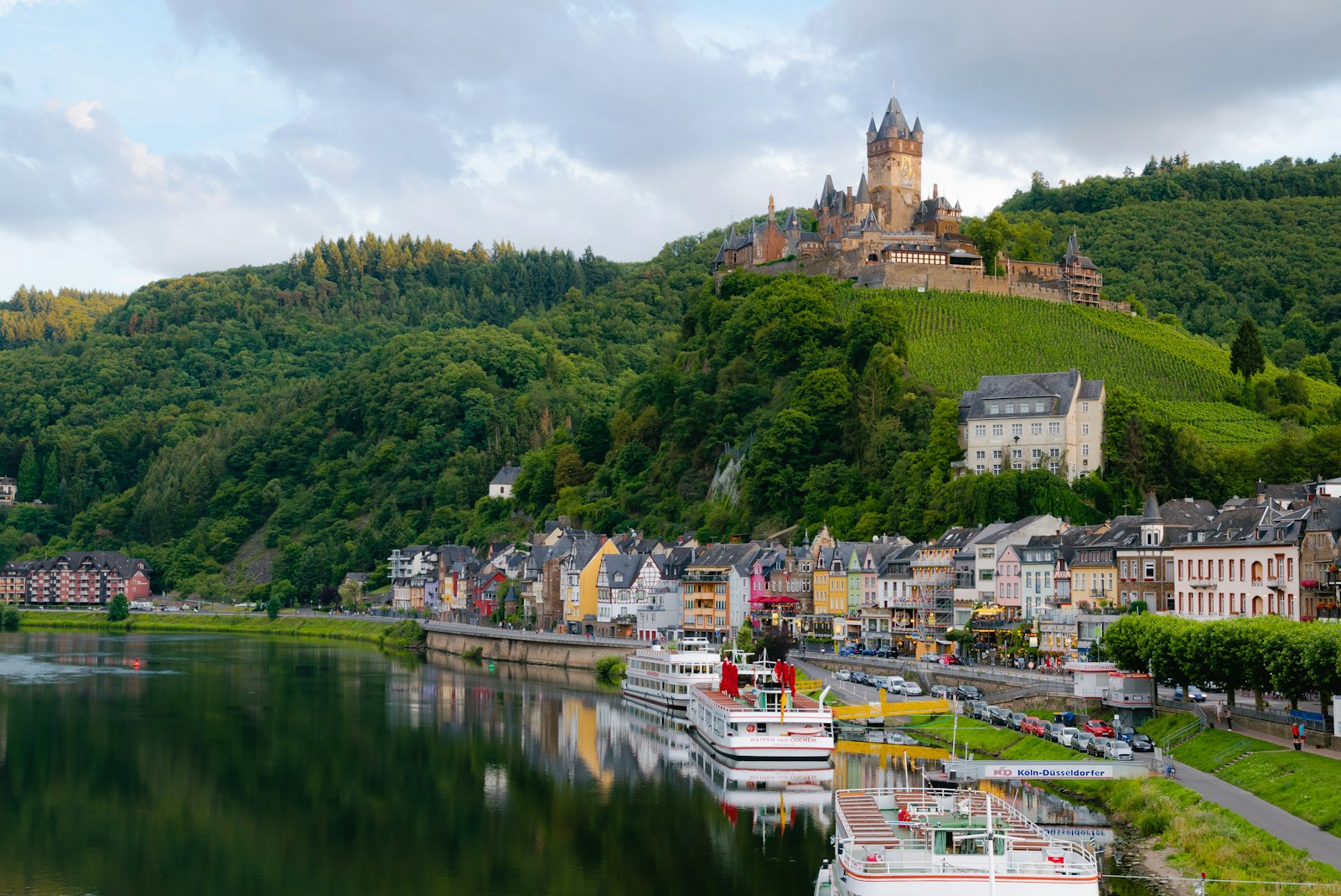
A Guide to Living in Northern Europe: From Weather to Welcoming Communities
Introduction
Northern Europe is renowned for its breathtaking landscapes, high quality of life, and vibrant cultures. This region, encompassing Sweden, Norway, Denmark, Finland, and Iceland, offers a unique blend of modern innovation and rich traditions. For those considering a move to this part of the world, it’s important to understand not just the practical aspects of daily life but also the subtle nuances of its diverse cultures. In this guide, we’ll explore everything from the chilly weather conditions to the warm, welcoming communities, providing you with all the information needed to make your transition as smooth as possible.
Understanding the Weather in Northern Europe
Living in Northern Europe comes with the experience of a distinct climate that varies significantly through the seasons. The region is generally characterized by its cold winters and mild summers, but this simple description barely scratches the surface of what to expect weather-wise.
Winter: Embrace the Cold
In Northern Europe, winter is profound, with temperatures often dropping below freezing. Days are short, and in some areas, you might experience the polar night, where the sun doesn’t rise at all. It’s essential to prepare for this with appropriate clothing—think layers, thermal insulation, and waterproof outerwear. Despite the cold, winter here has its charm, offering snowy landscapes and opportunities for unique activities like skiing, ice skating, and attending winter festivals.
Spring: A Time of Renewal
Spring brings a gradual increase in temperature and daylight. Snow melts, leaving behind a fresh, green landscape. This season is perfect for exploring outdoor attractions without the summer crowds. It’s a transitional period, so having a versatile wardrobe that can handle sudden changes in weather is advisable.
Summer: Enjoy the Mild Warmth
Summers are pleasantly mild, rarely getting uncomfortably hot. This is the time for midsummer celebrations, where locals enjoy the outdoors with picnics, hikes, and festivals. The phenomenon of the midnight sun—where the sun never fully sets—adds to the unique summer experience, particularly in places above the Arctic Circle.
Autumn: Spectacular Colors
Autumn is a visually stunning time, with vibrant fall colors and crisp air. It’s an excellent season for hiking and enjoying the last bit of mild weather before winter sets in again. Like spring, autumn weather can be unpredictable, so layered clothing is again essential.
Adapting to the Climate
To comfortably adapt to the climate of Northern Europe, invest in quality clothing and embrace indoor and outdoor activities that align with the season. Understanding and preparing for these weather conditions will ensure you can enjoy all that Northern Europe has to offer year-round.
Cultural Insights
Understanding the cultural dynamics of Northern Europe is crucial for anyone looking to settle in the region. Here, cultures are marked by a blend of historical richness and modern progressiveness, each country offering its unique flair yet sharing some common social values.
Social Norms and Values
In Northern Europe, there is a strong emphasis on equality, trust, and community. Societies here are structured around a comprehensive welfare system which ensures that everyone has access to healthcare, education, and social security. This social model promotes a sense of collective responsibility and trust among residents, which is a cornerstone of daily interactions.
Work-Life Balance
Northern Europeans place a high value on work-life balance, which is reflected in their working hours, parental leave policies, and the importance of leisure time. It’s common for workplaces to offer flexible hours and for professionals to leave early to spend time with family or engage in hobbies. This approach to work fosters a productive yet relaxed atmosphere that can be quite different from the high-pressure environments found in other parts of the world.
Traditions and Holidays
Traditions play a significant role in the cultural life of Northern Europe. For example, Midsummer is widely celebrated, especially in Sweden and Finland, where it’s marked by communal gatherings, traditional food, and maypole dancing. Christmas is another major celebration, with markets, concerts, and family gatherings taking center stage during the winter months.
Practical Tips for Cultural Adaptation
- Participate in Local Events: Engaging in local festivals and public events is a great way to understand and appreciate the cultural nuances of your new home.
- Respect for Privacy and Personal Space: While communities are welcoming, there is also a high regard for personal space and privacy. It’s important to strike a balance between being sociable and respecting others’ boundaries.
- Adopt an Open Mind: With diverse cultural practices and norms, keeping an open mind will help you embrace the new experiences and social customs you encounter.
Northern Europe offers a rich tapestry of cultural experiences that make living here truly enriching. As you settle into your new environment, embracing these aspects will help you connect more deeply with the community and enhance your experience of living in this part of the world.
Language and Communication
While English is widely spoken in Northern Europe, each country boasts its own official language, which plays a central role in daily life and cultural identity. Embracing the local language can significantly enhance your integration into the community.
The Role of English
English serves as a common second language across Northern Europe, particularly in business, academia, and tourism sectors. This widespread proficiency makes it easier for expatriates to settle in and communicate, especially in urban areas. However, a basic understanding of the local language is invaluable for deeper cultural immersion and social interactions.
Learning the Local Language
Each Northern European country has its own language, with Swedish in Sweden, Norwegian in Norway, Danish in Denmark, Finnish in Finland, and Icelandic in Iceland. Here are a few tips for learning the local language:
- Language Courses: Many communities offer language courses that can range from beginner to advanced levels. These are often available at local universities or adult education centers.
- Online Platforms: Utilize online resources and apps like Duolingo, Babbel, or local platforms recommended by residents.
- Practice with Locals: Engaging in conversation with native speakers is one of the best ways to learn. Don’t be afraid to make mistakes—most locals appreciate the effort to learn their language.
Communication Styles and Social Etiquette
Northern Europeans are generally reserved, polite, and direct in their communication. There is a strong emphasis on honesty and straightforwardness, which might seem blunt at first but is valued as a form of respect and transparency. Here are a few key points on social etiquette:
- Punctuality: Being on time is crucial in all social and professional settings.
- Respect for Privacy: Personal questions about age, salary, or marital status are usually avoided in initial conversations.
- Formality in Address: Until specifically invited to use first names, it’s common to address people by their last name and appropriate titles.
Understanding these communication nuances and making an effort to learn the local language will not only facilitate smoother interactions but also demonstrate your respect and commitment to integrating into the local culture.
Finding Community and Building Connections
Moving to Northern Europe can be a transformative experience, especially when you connect with local communities. Engaging with those around you not only eases the transition but also enriches your life abroad. Here are some ways to find community and build lasting connections.
Engaging with Local Communities
- Join Local Clubs and Societies: Whether you’re interested in sports, arts, or technology, there’s likely a club or society for it. These groups provide a fantastic opportunity to meet people with similar interests.
- Attend Local Events and Festivals: From music festivals to local markets, attending these events can help you feel more at home and is a great way to meet locals and expatriates alike.
- Participate in Workshops and Courses: Cooking classes, art workshops, and language courses are excellent ways to interact with others while learning a new skill.
Social Activities Common in the Area
- Outdoor Activities: Many Northern Europeans enjoy outdoor activities, including hiking, skiing, and cycling. Joining a group or a club that organizes such activities can be a great way to meet people.
- Café Culture: Spending time in cafes, especially in cities like Copenhagen or Stockholm, is a popular pastime. Cafes are not just places to eat and drink but also vibrant social hubs.
Volunteer Opportunities and Community Events
- Volunteering: This can be one of the most rewarding ways to meet people. Look for opportunities in local charities, schools, or community centers.
- Community Centers and Local Libraries: These often host events and gatherings that can help new residents get acclimated to the local culture and meet people.
Building Connections
- Be Open and Approachable: Simple gestures like smiling and greeting your neighbors can go a long way.
- Use Social Media and Apps: Platforms like Meetup.com or local Facebook groups can be invaluable for connecting with others in your area.
By actively participating in the community and showing openness to new experiences, you’ll not only forge strong connections but also greatly enhance your overall experience living in Northern Europe.
Practical Living Tips
Adjusting to life in Northern Europe involves understanding the practical aspects of daily living. From housing to healthcare, here’s what you need to know to navigate your new home effectively.
Housing and Accommodation
- Finding a Place to Live: In cities like Stockholm, Copenhagen, and Oslo, the housing market can be competitive. It’s beneficial to start your search online using local real estate websites or through an agency. Consider the proximity to public transportation and services.
- Types of Accommodation: Options range from apartments in city centers to houses in the suburbs. Depending on your location, you might also find co-living spaces which are popular among younger residents and expatriates.
- Lease Agreements: Understand the terms of your lease agreements, which typically include a security deposit and might require a guarantor. Leases in Northern Europe are usually straightforward but always ensure you comprehend the conditions before signing.
Public Transport and Mobility
- Efficiency and Coverage: Public transportation systems in Northern Europe are known for their efficiency and extensive network. Whether it’s buses, trains, or metro systems, you can rely on public transport to be punctual and clean.
- Cycling: This is a popular and eco-friendly way to get around, especially in cities like Copenhagen and Amsterdam, which offer extensive bicycle lanes and rental services.
- Driving: If you choose to drive, be aware of the high costs associated with owning a car, including taxes, insurance, and fuel. Also, note that during winter, roads can be icy and require special tires.
Access to Healthcare
- High Standards: Northern Europe is known for its high standard of healthcare. Access to public healthcare is usually funded by taxes and available to all residents, offering comprehensive services.
- Registration: Upon moving, register with the local health services to gain access to medical care. This usually involves obtaining a social security number or similar identification.
- Pharmacies and Emergency Services: Pharmacies are widely available and can provide advice for minor ailments. Emergency services are also readily accessible, with English-speaking operators in most regions.
Miscellaneous Tips
- Shopping for Essentials: Most cities and even smaller towns have well-stocked supermarkets and international stores. For cheaper deals, look for local markets or discount stores.
- Cultural Adjustment: Give yourself time to adjust to the local culture, which might be more reserved or different in pace compared to what you’re used to.
Embracing these practical aspects will help ensure a smooth transition to life in Northern Europe, allowing you to focus more on the experiences and less on the logistics of everyday living.
Conclusion
Embarking on a new life in Northern Europe is an adventure filled with exciting opportunities and unique cultural experiences. From understanding the chilly but charming weather patterns to engaging with welcoming communities, this guide aims to prepare you for a smooth transition. Whether it’s adapting to new social norms, learning a local language, or simply finding your favorite cafe, each step you take will bring you closer to feeling at home in this diverse and vibrant region.
Embrace the change with an open heart and mind, and you’ll find that Northern Europe offers a rich, fulfilling life with a perfect balance of tradition and modernity. Welcome to your new home—may it be as enriching as it is exciting!



